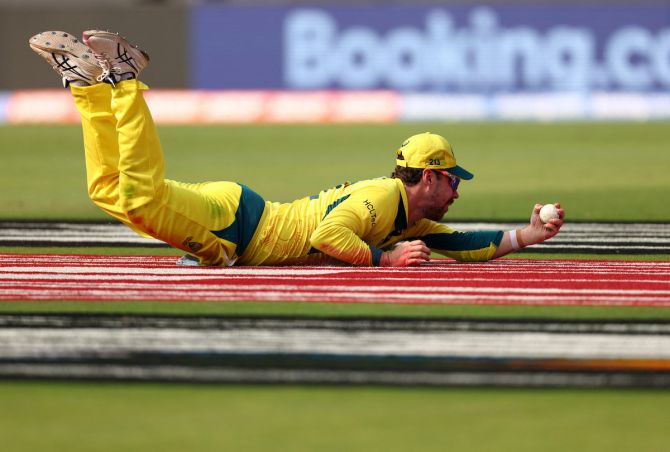The man who won the inaugural World Cup and defended the title four years later, Clive Lloyd once said, ‘catches win matches’. More than four decades after those golden words, the West Indian legend’s words are still relevant in the modern-day game although cricket has undergone significant changes since ODI World Cups were first played in white clothes and red balls.
The proof was there last Sunday as Australia won the World Cup beating hosts and unbeaten India who looked to have got all bases covered.
One spectacular catch and India were under the pump and Australia were on the rise. How one catch can reverse trends in such a short span of time is amazing indeed. Everyone appreciated the attacking knock that Travis Head played but that catch of his of Rohit Sharma was the turning point in the final.
When Rohit was batting, India were picking up boundaries at will and a total of 300 plus looked to be on the cards and Australia’s move to bowl first looked not a clever one.
>>Mouthwatering World Cup final in Ahmedabad
The thing about Rohit is that he makes batting look effortless. He picks up boundaries at will even on wickets that are not conducive for shot making. He offered a chance when he stepped out to Glenn Maxwell but couldn’t execute the shot properly. Head at covers sensed a chance, ran backwards and put in a dive to hold onto a stunning catch. That catch changed the tone of the Indian innings.
The hosts were picking up boundaries at will when Rohit was in the middle. There were 11 boundaries in the first ten overs with Rohit out there, but only five of them in the next 40 overs after the Indian captain was dismissed. That’s proof as to how valuable the Indian captain’s wicket was and how crucial that catch was. Had Rohit batted for 20 overs, it was match over Australia.
While a spectacular catch sealed India’s fate in the final, Sri Lanka’s poor catching had given them nightmares this World Cup. By spilling 16 catches in nine games, Sri Lanka were the worst fielding unit in the competition. They could have certainly won more than just two games had they taken all catches.
Looking at Sri Lanka’s training methods during the World Cup, their fielding drills look outdated. It’s a pity that some of their youngest players do not put in hard yards at fielding and have become liabilities.
The Batting Coach seems to be moaning about the fielding woes for the team’s poor performance while the Fielding Coach seem to be blaming the batting collapses for the horror show. Both of them together seem to be blaming the poor fitness standards. They have all passed the buck without accepting responsibility. The whole system is a blame game, and nobody is willing to bite the bullet and accept that much work needs to be done to make the team a formidable unit.
There is so much talk on Sri Lanka’s skill levels not being all there with rest of the teams. That may be true when it comes to batting and bowling, but fielding needs little skill and lot of guts and that’s what they have failed to address. Shocking indeed.
Not just with Travis Head’s catch. Look at how many runs David Warner himself cut down on the field manning the mid-wicket boundary so well. He must have at least cut down 20 runs with his electric fielding. He ran ferociously, put in the dive when required and the return throw was on the money and batters wouldn’t chance his arm.
It’s not just Warner’s ability to cut down boundaries in the deep, but by denying those boundaries he had taken the momentum away from the batters as well who had to do lot of running or take a risk and go aerial. That was playing into Australia’s hands.
>>A few remedial measures moving forward after World Cup debacle
Warner is no youngster. At the age of 37, he is not only Australia’s oldest player but one of the oldest in the tournament as well. But he was running around like a 20-year-old and enthusiasm of this nature is contagious.
It is safe to say that Australia’s fielding won them the World Cup final. India had an advantage over Australia in every aspect, be it batting, pace bowling or spin bowling. The only area they were below Australia was fielding and the six-time champions made it count when it mattered most in front of a packed house.
There is so much to learn for Sri Lanka from Australia’s successful campaign. The foremost of them is that they were not the most talented outfit in the competition. But they made sure that some key elements like fielding was right up there and were able to go onto win the title although the fancied teams for the championship were India, England, South Africa and New Zealand.
It is quite remarkable how small things count a lot in cricket. Will Sri Lanka learn?














